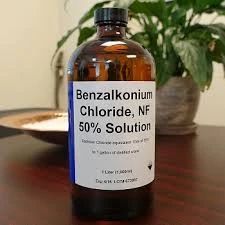Optimizing Coagulation and Flocculation Processes in Water Treatment Systems for Enhanced Efficiency
Coagulation and Flocculation in Water Treatment
Water treatment is a critical process in ensuring the safety and purity of drinking water. Among the various processes involved, coagulation and flocculation stand out as essential methods for removing suspended solids, organic matter, and other contaminants from water. These processes facilitate the aggregation of particles, leading to their subsequent removal through sedimentation or filtration.
Understanding Coagulation
Coagulation is the initial stage of the water treatment process, where chemical agents, known as coagulants, are added to water. These coagulants are typically metallic salts, such as aluminum sulfate (alum) or iron salts. When introduced into the water, these chemicals destabilize the colloidal particles that are suspended due to their surface charges. Most particles in water carry a negative charge, which prevents them from clumping together. Coagulants neutralize these charges, causing the particles to bind and form larger aggregates.
The effectiveness of coagulation depends on several factors, including the type and dosage of the coagulant, the water temperature, pH level, and the presence of other substances. For instance, a pH value that is too high or too low can impede the coagulation process, thus affecting the overall efficiency of water treatment.
The Role of Flocculation
Following coagulation, the flocculation process takes place. Flocculation involves gently mixing the water to encourage the formation of larger aggregates, known as flocs. During this stage, the water is stirred at a slower rate, allowing the particles to collide and bond together. The mixing time and speed are crucial, as excessive agitation can break the fragile flocs apart.
Flocculation can be enhanced by adding polyelectrolytes—long-chain polymers that promote further aggregation of particles
. These are particularly useful in treating water with very fine particles or specific types of contaminants that require additional adhesion for effective removal.coagulation and flocculation in water treatment

Sedimentation and Filtration
Once the flocs have formed, the water is allowed to settle in a sedimentation basin. The larger aggregates sink to the bottom, where they can be removed as sludge. This sedimentation process significantly reduces the turbidity of the water, leading to clearer effluent. In many treatment plants, the settled water is then subjected to filtration through sand, gravel, or membrane filters to remove any remaining suspended particles.
The combination of coagulation, flocculation, and subsequent sedimentation and filtration plays a vital role in water purification. While coagulation and flocculation are primarily concerned with the removal of suspended solids, they also aid in the removal of other contaminants, including bacteria, viruses, and organic compounds.
Applications and Benefits
The application of coagulation and flocculation is widespread in municipal water treatment facilities, industrial processes, and wastewater treatment plants. These methods are favored for their effectiveness and cost-efficiency. By reducing the load of contaminants and improving water clarity, these processes contribute significantly to public health.
Moreover, the integration of coagulation and flocculation into advanced treatment systems, such as membrane bioreactors or ultrafiltration, results in higher quality water outputs. Innovations in coagulant formulation and flocculating agents continue to enhance the effectiveness of these processes, leading to improved water sustainability practices.
Conclusion
In conclusion, coagulation and flocculation are fundamental processes in modern water treatment. They not only help in removing suspended solids but also play a significant role in safeguarding public health by ensuring that drinking water is free from harmful contaminants. As water quality standards continue to evolve and environmental challenges increase, mastering these essential techniques will remain a priority for water treatment professionals worldwide. Understanding and optimizing each stage of coagulation and flocculation will undoubtedly lead to more efficient and reliable water treatment solutions in the future.
-
Pbtc Scale InhibitorPBTC: A Scale Protector for Industrial Water TreatmentNewsAug.05,2025
-
Organic Phosphonate: An Efficient Defender in the Field of Scale InhibitionNewsAug.05,2025
-
Hydrolyzed Polymaleic Anhydride: Green Pioneer in Scale Inhibition FieldNewsAug.05,2025
-
PAPEMP Polyamino Polyether Methylene Phosphonic Acid For SaleNewsAug.05,2025
-
Flocculant Water Treatment: A Pioneer in Purification in the Field of Water TreatmentNewsAug.05,2025
-
Benzyl Isothiazolinone: An Efficient and Broad-Spectrum Antibacterial Protective GuardNewsAug.05,2025





